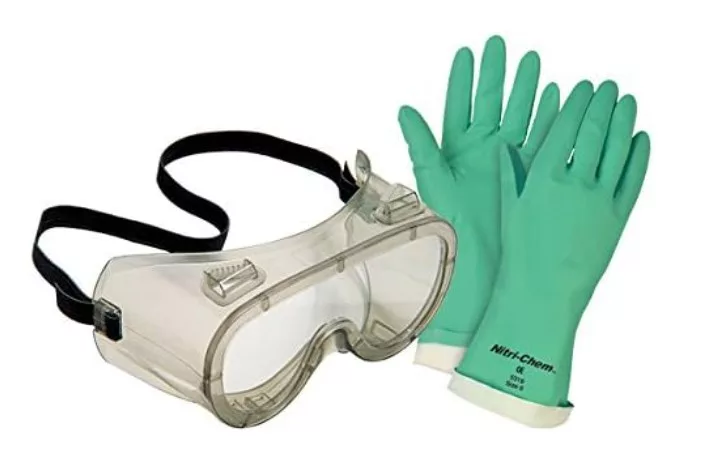
Pesticide Safety: Storage, Recordkeeping & PPE
OR-OSHA Requirements
Division 4, Subdivision W: Worker Protection Standard
Division 4, Subdivision Z: Chemicals/Toxins
The following requirements for pesticide storage apply to restricted use products. Pesticide handlers can follow the same standards for general use products, but it is not required.
All chemical storage areas should also comply with state and local fire codes.
All RUPs must be kept in a locked area. Lock it every time you come and go, even if you are spraying that day.
Floors and shelves storing RUPs must be made of a cleanable surface. This can include metal or plastic shelving as long as they are durable and can handle the weight of your products. Wooden shelves with vinyl coating, or that has been painted and sealed is acceptable as well.
Store liquid jugs in plastic trays or large tote bins to contain any spills, or on shelves that have a lip that stops spills from overflowing.
Store dry products separately from or above wet products. In case of spills, liquids should not leak onto dry products.
Separate spray products into substance categories (insecticides, herbicides, adjuvants, etc.) to prevent potential interactions. Label each category.
All chemical containers should be labeled with the product name. If the primary container has a leak, you can move the product into a secondary container but must label it with, at a minimum, the product name.
Anywhere flammable liquids are received, stored or dispensed must have a sign reading “No Smoking or Open Flame” or “FLAMMABLE – KEEP FIRE AWAY” posted.
Consider posting National Fire Protection Association placards to indicate hazards for first responders, especially for products that could react with water or be hazardous with heat and smoke (not required, but suggested).
It is important to maintain documentation for all pesticide-related requirements.
Product Labels (retain for at least 2 years from date of use)
Safety Data Sheets (retain for at least 30 years from date of use)
WPS Training Records for Workers and Handlers (retain for 2 years from date of training)
Application Records (retain for 2 years from REI expiration date)
- Product name
- EPA Registration Number
- Active Ingredient
- Crop or site treated and location/description of treated area
- Date(s) and time(s) the application started and ended
- Duration of the REI for that application
Regulatory agencies, medical personnel, employees and designated representatives of employees can request copies of application or hazard information during the 2-year retention period.
For Employees (Current or Former):
- Employers must provide records within 15 days after receiving the request.
- The request may be made verbally OR in writing.
- The first copy of requested records must be provided free of charge. If additional copies are requested, the employer may charge reasonable costs (for expenses directly related to time spent searching for records or printing/copying costs).
For Designated Representatives of Employees:
- Employers must provide records within 15 days after receiving the request.
- The request must be made in writing and include the following information:
- Name of employee (or former employee) being represented.
- A description of the specific information being requested, including dates of employment; date(s) for which the records are requested; type of work conducted by the worker during the period for which records are requested (for example: planting, harvesting, applying pesticides, etc.); and specific application and/or hazard information requested.
- A written statement clearly designating the representative to request pesticide application and hazard information on the employee’s behalf that includes the employee’s printed name and signature, date of designation, and printed name name and contact information for the designated representative.
- Where to send the information (mailing address or email address) if the request includes that the information be sent.
- If a record has been provided previously without cost to an employee or their designated representative and additional copies are requested, the employer may charge reasonable administrative costs for the additional copies (expenses directly related to searching for records or printing/copying costs).
** If the written request from a designated representative does not meet the above requirements, the employer is NOT required to provide access or copies.
For Medical Personnel:
- Employers must provide records promptly after receiving the request.
- Request may be made verbally or in writing.
- Records should be provided free of charge.
PPE on-hand should be, at a minimum, what the product labels require. See Worker Protection Standard and Respiratory Protection for more information.
Chemical-Resistant Apron: A chemical-resistant apron that covers the front of the body from mid-chest to the knees. If a chemical-resistant suit is substituted for coveralls, then any label requirement for an additional layer of clothing beneath the coveralls is waived.
Chemical-Resistant Footwear: Chemical-resistant boots or shoes, or chemical-resistant shoe coverings worn over shoes or boots.
Chemical-Resistant Headgear: a chemical-resistant hood or chemical-resistant hat with a wide brim.
Chemical-Resistant PPE: Must be made of material that allows no measurable movement of the pesticide through the material during use.
Chemical-Resistant Suit: Loose-fitting, one-piece or two-piece chemical-resistant garment that covers the entire body except head, hands and feet.
Coveralls: Loose-fitting, one-piece or two-piece garment that covers the entire body except head, hands and feet. If a chemical-resistant suit is substituted for coveralls, then any label requirement for an additional layer of clothing beneath the coveralls is waived.
Gloves: Must be the type specified on the product label. If no type is specified, then use the category chart to select gloves that will provide the appropriate level of protection. Gloves made of leather, cotton, or other absorbent materials may not be worn during handler activities unless they are listed as acceptable on the pesticide label.
- Separable glove liners may be worn beneath chemical-resistant gloves, unless the product label prohibits it.
- Some pesticide labels specify a category for gloves. The material you choose from that category will depend on how frequently the handler/applicator can clean or replace PPE. For example, if the label requires gloves from Category B, Nitrile Rubber gloves have Slight resistance and will need to be cleaned or replaced every 10 minutes, while Barrier Laminate gloves have High resistance and only need to be cleaned or replaced at the end of the day’s work period.
Protective Eyewear: Includes goggles, face shield, safety glasses with front, brow and temple protection, and/or full-face respirator.
Separable Glove Liners: Separate glove-like hand coverings, made of lightweight material, with or without fingers. Separable glove liners may not extend outside the chemical-resistant gloves under which they are worn.
- Work gloves made from lightweight cotton or poly-type material are considered to be glove liners if worn beneath chemical-resistant gloves.
- Chemical-resistant gloves with non-separable absorbent lining materials are not allowed.
- Glove liners must be discarded after a total of 10 hours of use or within 24 hours when first put on, whichever comes first.
- Liners must be replaced immediately if directly contacted by pesticides.
- Do not reuse glove liners.
Waterproof: Made of material that allows no measurable movement of water through the material during use.
Handlers must use PPE specified on the product label.
Employer must provide the handler the PPE required by the product label and ensure the PPE is clean and in proper operating condition.
- Long-sleeved shirts, short-sleeved shirts, long pants, short pants, shoes, and socks are not considered PPE under the WPS rule, although such work clothing must be worn if required by the label.
When PPE is required, the employer must take measures to prevent heat-related illness.
- All PPE should be used correctly according to manufacturer’s instructions.
- Before each day of use, all PPE should be inspected for damage and wear and repaired or replaced before use.
- All PPE should be cleaned according to manufacturer’s instructions or product labeling instructions before each day of reuse. In the absence of any instructions, PPE should be washed thoroughly in detergent and hot water.
- Contaminated PPE must be kept separate from non-contaminated PPE, other clothing or laundry and washed separately from any other clothing or laundry.
All washed PPE must be dried thoroughly before being stored or reused.
All clean PPE must be stored separately from personal clothing and apart from pesticide-contaminated areas.
Any person who cleans or launders PPE must be informed of the following:
- Such equipment may be contaminated with pesticides and there are potentially harmful effects from exposure to pesticides.
- The correct way(s) to clean PPE and how to protect themselves when handling such equipment.
- Proper decontamination procedures that should be followed after handling contaminated PPE.
Handlers must have a place away from pesticide storage and pesticide use areas where they can do the following:
- Store personal clothing not worn during handling activities.
- Put on PPE at the start of any exposure period.
- Remove PPE at the end of the exposure period.
Handlers should not be directed or allowed to take home employer-provided PPE contaminated with pesticides.
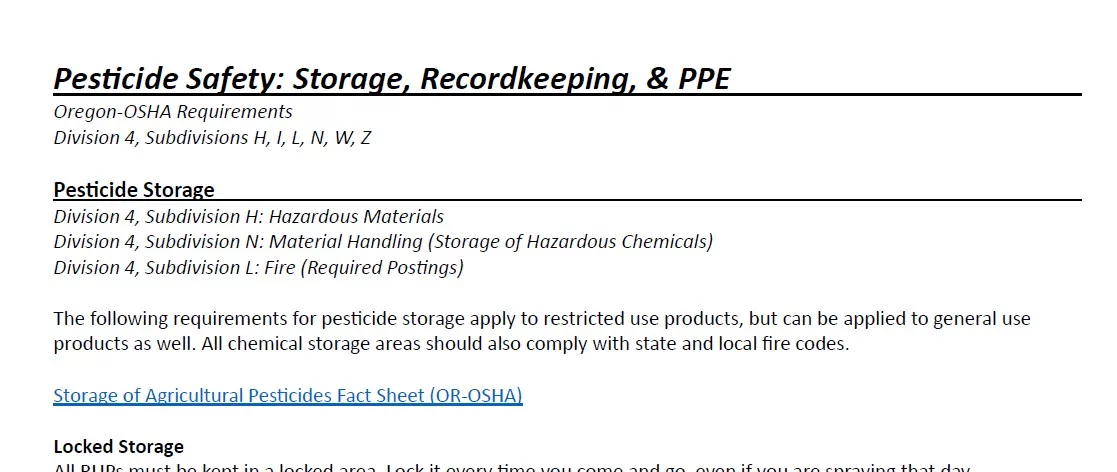
Printable Pesticide Safety Summary
A printable PDF summary of OR-OSHA’s pesticide safety rules for storage, record-keeping, and PPE.

TELUS Agronomy Label & SDS Library
Download or print product labels and safety data sheets.
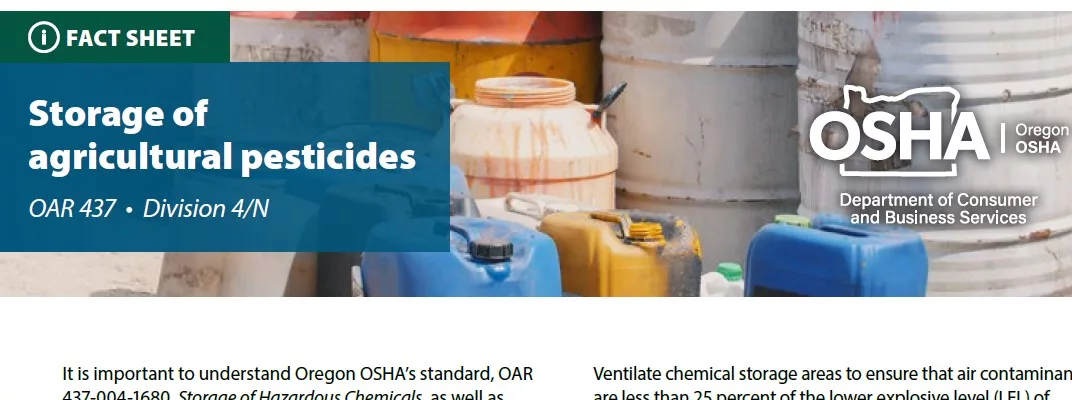
Storage of Agricultural Pesticides Fact Sheet
Read OR-OSHA’s fact sheet about how to properly store agricultural pesticides.
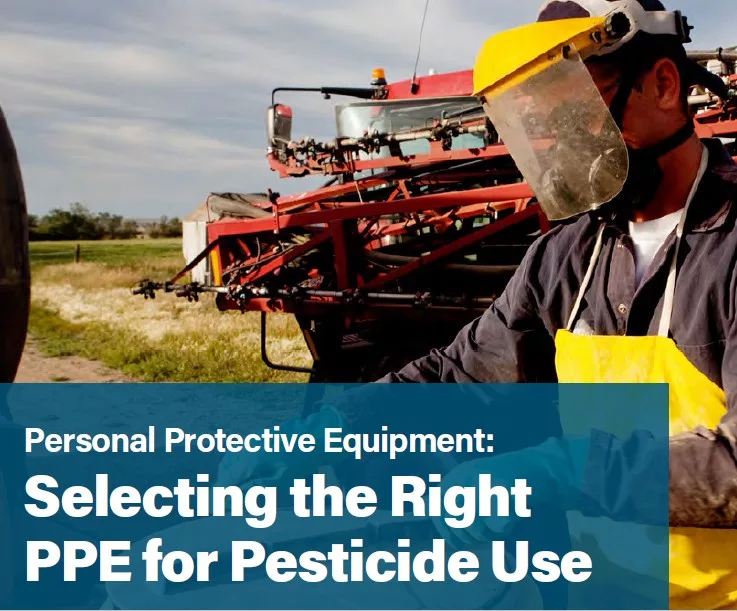
Selecting the Right PPE for Pesticide Use
Download OR-OSHA’s guide to selecting the right PPE for pesticide use.
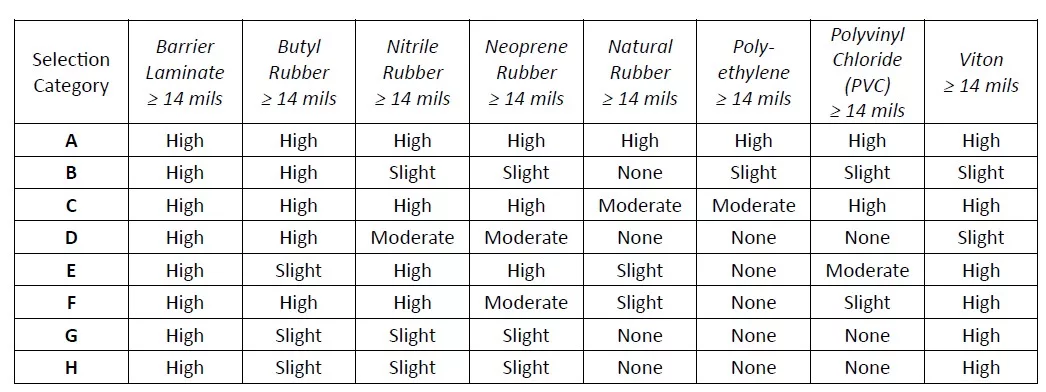
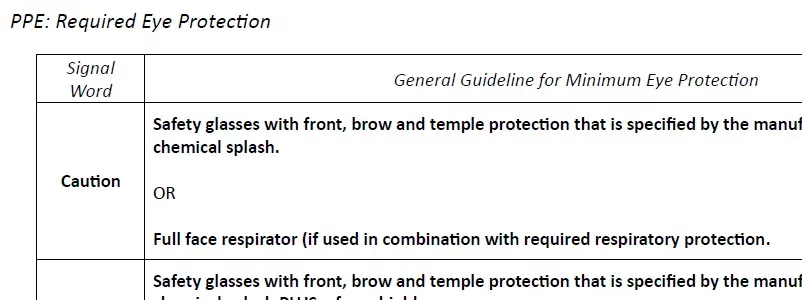
Eye Protection Guide
Download a chart for determining how much eye protection is required when using plant protection products.

